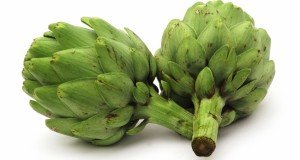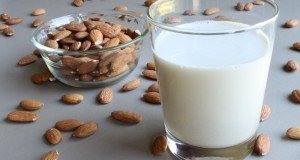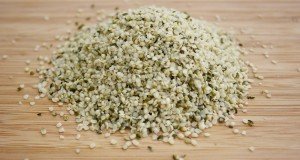 (Naturalhealth365) Over 23 million Americans are currently living with autoimmune disease, which encompasses such varied conditions as multiple sclerosis, lupus, rheumatoid arthritis, thyroiditis, inflammatory bowel disease and celiac disease. The incidence of autoimmune conditions has risen alarmingly over the past few decades – for instance, researchers at the Mayo Clinic found that young people are over four times more likely to have celiac disease than they were in the 1950s.
(Naturalhealth365) Over 23 million Americans are currently living with autoimmune disease, which encompasses such varied conditions as multiple sclerosis, lupus, rheumatoid arthritis, thyroiditis, inflammatory bowel disease and celiac disease. The incidence of autoimmune conditions has risen alarmingly over the past few decades – for instance, researchers at the Mayo Clinic found that young people are over four times more likely to have celiac disease than they were in the 1950s.
Conventionally speaking, there is ‘no cure’ for autoimmune disorders, and medications meant to treat symptoms – such as NSAIDs and immune-suppressing drugs – can unleash a raging storm of unwanted side effects. But, a substance produced in the human body could provide a natural solution.
Many natural health experts believe that glutathione – a disease-fighting antioxidant – holds the key to managing many of the over 100 autoimmune diseases known today.
“Leaky gut” may be both a symptom and cause of autoimmune disease
Autoimmune disease is triggered when the immune system mistakenly attacks the body’s own cells and tissues – causing inflammation and damage to joints and organs.
Although the cause of autoimmune disease is not wholly understood, many researchers believe that “leaky gut” – once considered merely a symptom of autoimmune disease – plays a major role.
Leaky gut – also known as increased intestinal permeability – allows toxins, antigens and bacteria to enter the bloodstream, causing acute inflammation and triggering autoimmune reactions. Contributors to leaky gut include mental/emotional stress, exposure to environmental toxins, disturbances in the bacterial balance of the digestive systems and a diet high in refined sugar, GMOs (genetically modified organisms) and other inflammatory foods.
Indicators of leaky gut include diarrhea, ulcers, inflammatory bowel diseases, allergies, chronic fatigue syndrome, weight gain and obesity.
Significantly, researchers have found that much of the body’s ability to recover from leaky gut depends on the maintenance and efficient recycling of glutathione.
Two different forms of glutathione are needed for essential recycling
Glutathione – the primary antioxidant for every cell in the body – is especially important in protecting the mitochondria, the organelles that are considered to be the “power centers” of the cells.
In addition to controlling inflammation and oxidative damage to cells, glutathione helps the liver detoxify waste products and eliminate them from the body. Unfortunately, this life-sustaining substance can be depleted by a variety of factors, such as injury, stress, infection – and even the normal process of aging.
Restoring levels of glutathione is of paramount importance to health and well-being – but this can only be accomplished through proper glutathione recycling.
And this, in turn, depends on the correct balance between two different versions of glutathione: the “reduced” and “oxidized” forms.
Simply put:
Delicate cell mitochondria are constantly under threat from free radicals. Searching to become stable, these free radicals “rob” mitochondria of their electrons – in order to couple them with their own, unpaired electrons. This process of “stealing” electrons causes mitochondria to undergo oxidative stress, inflammation and degeneration.
This is where the “reduced” form of glutathione intervenes. By allowing itself to acquire an unpaired electron, it spares the mitochondria from damage and turns itself into oxidized glutathione. In the process, it becomes unstable and inflammatory.
This oxidized glutathione is then itself “rescued” – and reborn. An enzyme called glutathione reductase facilitates pairing with available glutathione in the cell, allowing it to transform back to a reduced state.
At this point, the reduced glutathione is ready to go back into battle – and resume its protective work.
None of this could occur without the pair of enzymes – glutathione reductase and glutathione peroxidase – that help orchestrate the recycling process.
Proper glutathione recycling helps alleviate autoimmune disease
Unsurprisingly, studies have shown that people with autoimmune disease have lower levels of glutathione – and impaired glutathione recycling has been associated with leaky gut.
In a sort of biochemical “Catch-22,” illness and infections deplete glutathione – at a time when the protective effects of glutathione are most needed. (Others factors that threaten glutathione levels include poor nutrition, hormonal imbalance, stress, drinking, smoking, medications and exposure to environmental toxins.)
However, when the body can efficiently recycle inflammatory oxidized glutathione safely back to reduced glutathione, autoimmune disease can’t help but improve.
Effective glutathione recycling helps protect mitochondria in cells, promote recovery of tissues and boost the immune system. In addition to decreasing inflammation and oxidative damage, glutathione can help reduce autoimmune reactivity – thereby helping to curb food sensitivities, allergies and disease “flares.”
And, by restoring gut barrier function, glutathione can help heal leaky gut syndrome – perhaps the most important benefit.
Support proper glutathione recycling with high-quality supplements
Nutritional compounds, herbs and supplements can help to activate the pair of enzymes that promote glutathione recycling.
Vitamin C helps to convert oxidized glutathione back to its reduced, active form, while B-complex vitamins aid the methylation process – which is essential for the production and recycling of glutathione.
N-acetyl-cysteine, a bioactive form of cysteine (one of the building blocks of glutathione) has been shown in studies to raise glutathione levels in older cells.
And selenium, an antioxidant mineral, helps to produce the enzyme glutathione peroxidase – which facilitates the conversion of reduced glutathione to oxidized glutathione.
In addition, the medicinal fungus cordyceps helps to enhances the actions of glutathione peroxidase, while gotu kola (Centella asiatica) has been shown in studies to drastically increase glutathione production.
And, finally, milk thistle helps improve the balance between reduced and oxidized glutathione.
As always, check with your integrative healthcare provider before making any changes to your diet or supplement routine.
Of course, the first step to maintaining adequate glutathione levels is avoiding factors that deplete it in the first place – such as environmental toxins, excessive use of alcohol and smoking.
You can also improve your glutathione status with lifestyle choices that support glutathione recycling, such as exercising, eating a nutritious (organic) diet, getting enough sleep and reducing stress through natural methods such as biofeedback and guided meditation.
Remember: by supporting and promoting the production and recycling of glutathione, you are enlisting the help of a powerful natural ally – one that has the potential to help tame autoimmune disease and set the stage for lasting recovery.
Editor’s note: LuvByNature Liposomal LiverLuv is my Number ONE pick for supporting liver health, detoxification and glutathione levels. Click here to order today!*
*And, yes, your purchases help to support our operations at NaturalHealth365.
Sources for this article include:
The post Tame autoimmune disease by effectively raising your glutathione levels appeared first on Natural Health 365.







